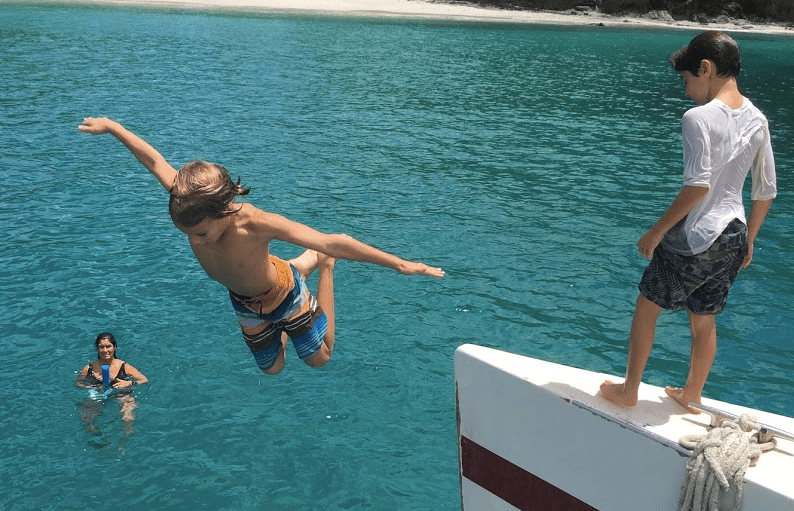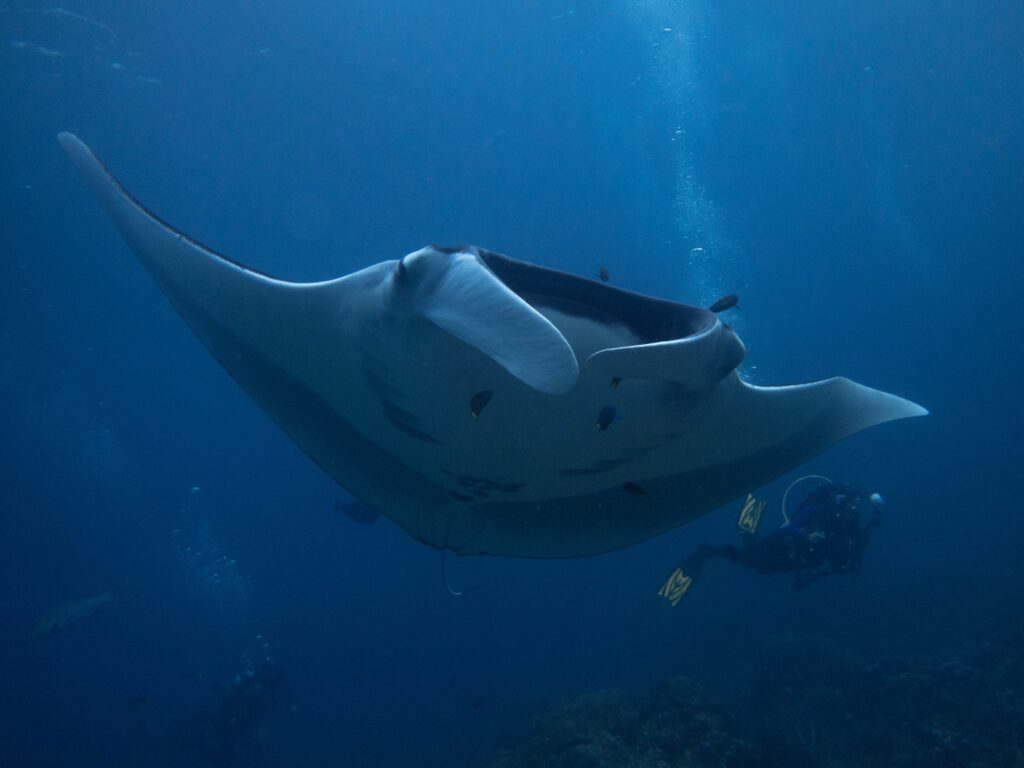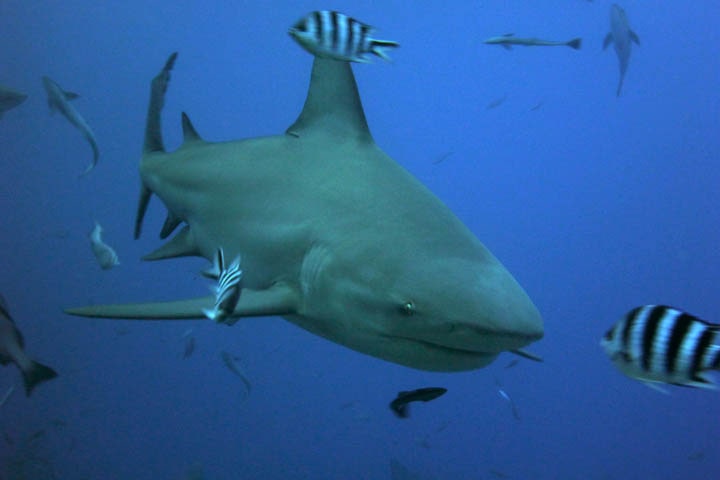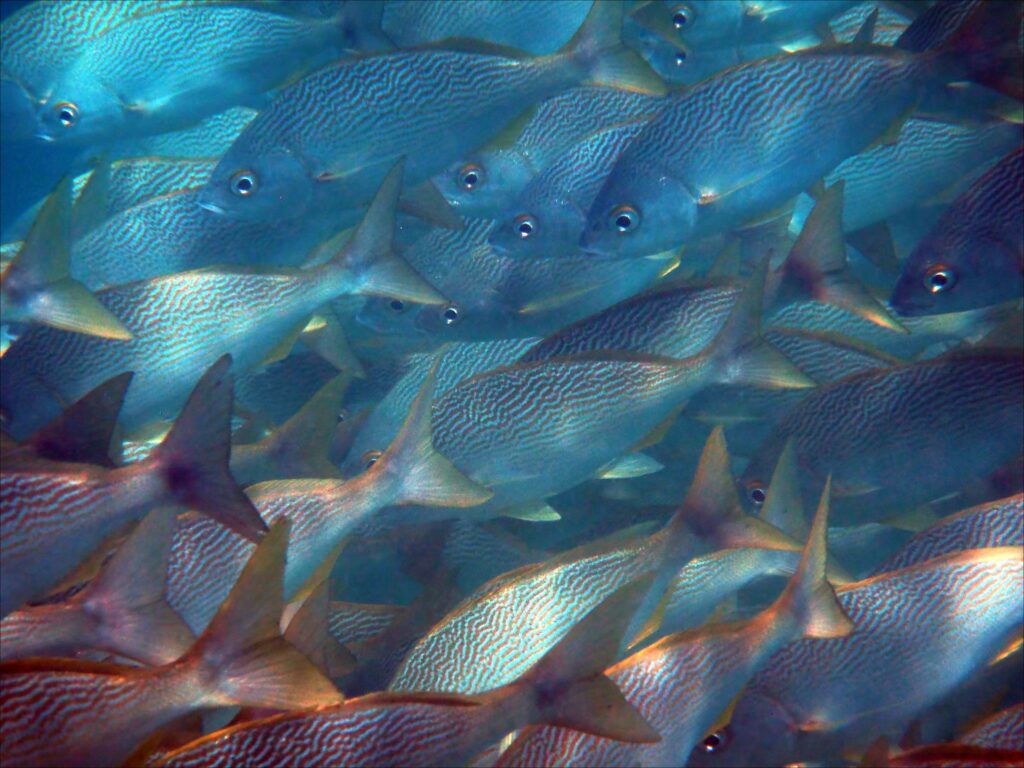 You may have heard that Costa Rica marine life is incredibly biodiverse, but do you know just how biodiverse it is?
You may have heard that Costa Rica marine life is incredibly biodiverse, but do you know just how biodiverse it is?
In point of fact, nearly 7,000 marine species swim Costa Rican waters, representing a full 3.5% of all marine life in the world. That’s right, in the entire world. All, in a country smaller than West Virginia. (May we never cease to be impressed by this incredible country!)
What’s more, marine biologists and other experts hypothesize that there are likely hundreds of thousands more species awaiting discovery and documentation. Could you or your children be the next diver or snorkeler to snap a photo of heretofore undiscovered Costa Rica marine life?
While we can’t answer that question, we can share a few of our most breathtaking, jaw-dropping, adrenaline-inducing, bucket-list species that you can spot right here, in our Pacific waters. Welcome to your own backyard.
For simplification and classification purposes, this post will stick to marine reptiles. Our mammalian friends, including Costa Rica’s whale and dolphin species, will be featured in a future post!
And now, your underwater wonders:
Rays (7 species)

"Giant Manta Ray" by timc74 is licensed under CC BY-NC-SA 2.0 .
We might be about to blow your kids’ minds, but did you know that, as elasmobranchs, rays and sharks are very closely related? That said, ray fossils date back 200 million years earlier than sharks and, in fact, these magnificent creatures are thought to have evolved from flattened shark species!
Here are seven ray species you can find off Costa Rica’s Pacific coast:
- Bullseye Electric Ray (Diplobatus ommata): A true eye-catcher (and adrenaline-stoker), this electrified ray inhabits the Catalinas Islands and can deliver a punch up to 37 volts! Luckily, they’re easy to spot, thanks to the – well, spot or bullseye in the center of their backs.
- Giant Manta Rays (Mobula birostris): Truly one of the underwater world’s most magnificent and ethereal sights, giant mantas can weight up to 3,000 pounds and have an incredible wingspan of up to 30 feet! They frequent the Catalina Islands (January through March), as well as the Islas Murciélago/Bat Islands (June through August), and the general Pacific Coast (February and March).
- Golden Cownose Ray (Thinoptera steindachneri): Known to gather by the hundreds or even thousands, these fierce hunters have specially evolved to eat mollusks, like clams and oysters.
- Leopard Round Stingray (Urobatis pardalis): Wildly beautiful but definitely a creature to leave alone, these spotted stingrays have sharp, short tails that pack a serious wallop.
- Longtail Stingray (Hypanus longus): Solitary or in pairs, these stealthy stingrays camouflage themselves beneath the sand, lying in wait for fish, crabs, and other tasty tidbits.
- Sicklefin Devil Rays (Mobula tarapacana): If you ever spot a ray jumping the ocean’s surface, it’s likely this fun-loving fish is trying catch your attention! (Or snag a good meal… the jury’s still out on the reasons behind this behavior.)
- Spotted Eagle Rays (Aetobatus laticeps): This gorgeous ray is frequently photographed, so you’re probably familiar with its lovely color pattern. But did you know that spotted eagle rays are incredibly social, often travelling in schools of 200+?
Sea Turtles (4 species)

"The Green Sea Turtle" by rexb is licensed under CC BY-NC-SA 2.0 .
Sea turtles are one of Costa Rica’s most iconic sights – and one that most people only spot onshore, when the turtles are nesting or their babies are hatching! That said, sea turtles are common sightings for Guanacaste snorkelers, divers, and boaters. See which ones you can spot!
- Green Sea Turtles (Chelonia mydas agassizi): Named for their green skin (and not their dark shell), green turtles often swim up to 1,600 miles, one way, every year, on their travels between nesting and feeding grounds.
- Hawksbill Sea Turtles (Eretmochelys imbricata): Named for their hawk-like nose, critically endangered hawksbills have a spectacularly beautiful shell and are a rare sight in Costa Rica.
- Leatherback Sea Turtles (Dermochelys coriacea): The world’s largest sea turtle and one of the largest reptiles on the planet, leatherbacks can weigh up to an incredible 1,100 pound! They are named for their soft, oily shell – a sharp (or rather, soft) contrast to other sea turtles’ hard, bony carapaces. Leatherback nest at our very own Playa Grande, within Las Baulas National Marine Park! (Una baula is Spanish for leatherback.)
- Olive Ridley Sea Turtles (Lepidochelys olivacea): Olive ridley turtles are known to return to the very shores on which they were born. In Costa Rica, this phenomenon is known as an arribada, when thousands of nesting turtles come to shore at once. Spot them at Playa Ostional and Playa Nancite, on the Nicoya Peninsula, from June-December.
Sharks (5+ species)

"Bull shark" by Daniele Colombo is licensed under CC BY-NC-SA 2.0 .
Did you know that sharks have an incredible six senses, which help them navigate the ocean’s depths? These include smell, sound/vibration, touch, sight, taste, and electroreception, which is the ability (a superpower, almost?) to detect the earth’s electromagnetic fields. (Electroreception can be used, for example, to detect the electromagnetic field of hidden or unseen prey.)
- Bull Sharks (Carcharhinus leucas): Particularly common around the Bat Islands/Islas Muriélago, these 200 to 500-pound beasts can osmoregulate, which allows them to live in fresh or saltwater.
- Pacific Nurse Shark (Triaenodon obesus): Known in Spanish as “cat sharks,” thanks to their feline-like “whiskers,” Pacific nurse sharks can live up to 25 years.
- Pelagic Thresher Shark (Alopias pelagicus): Incredibly showy, thanks to its long caudal fin (upper tail fin), the endangered pelagic thresher is so elusive that even shark enthusiasts rarely spot them.
- Whale Shark (Rhincodon typus): Only occasionally spotted along Costa Rica’s Pacific coast, this endangered shark is the largest fish in the world. At up to 60 feet and 20+ tons, it’s as long as a school bus and as heavy as three adult elephants!
- Whitetip Reef Sharks (Triaenodon obesus): The most widely distributed shark in Costa Rica, whitetips weigh just 40 pounds and measure about 1 meter/3 feet long. Unlike many other types of sharks, they do not need to swim to breathe, so you can find them resting on the ocean floor!
Tropical Fish (800+ species)

"School of grunts" by Cocoabiscuit is licensed under CC BY-NC-ND 2.0.
Scientists like to estimate low and then be surprised by big – and even so, they’re comfortable stating that Costa Rica’s Pacific waters house an incredible 800+ fish species.
There’s no way we can list them all, so we thought we’d give you a quick rundown of the flashy biggies: angelfish, boxfish, damselfish, parrotfish, puffer, seahorses, scorpionfish, surgeonfish, triggerfish, trumpetfish, and wrasse are some of the incredibly colorful and eye-catching species you may find beneath the surface.
An Educational Place to Call Home: Inspire a Love of Learning in Costa Rica & CRIA
If you’re reading this, it’s safe to say that you probably live in Costa Rica, at least in part, because of the country’s incredible biodiversity. Every day is a learning experience and there’s always something that instills wonder and inspires CRIA students.
And that’s what exploring Costa Rican marine life can do: learn a new skill, make memories, and help your children find their inspiration, their interests, and their passions, just like we do at CRIA.
We don’t want you to just take our word for it, though. Come and visit. Tour our campus. Poke your head into one of our classes, a swim class, or an extracurricular. Get a feel for our community. See if it inspires you.
Whether you’re wondering about tuition & fees or special education in Costa Rica, cafeteria nutrition or the admissions process, we’re here to help. And when you’re ready to take the next step – to come, visit, and get your questions answered in person – we’d love to welcome you!
Get in touch to schedule a campus visit. We look forward to it!

